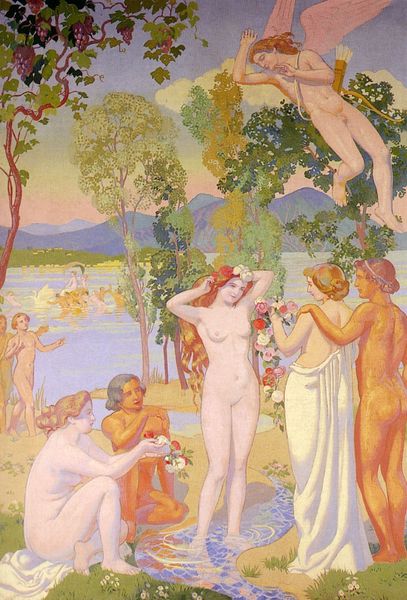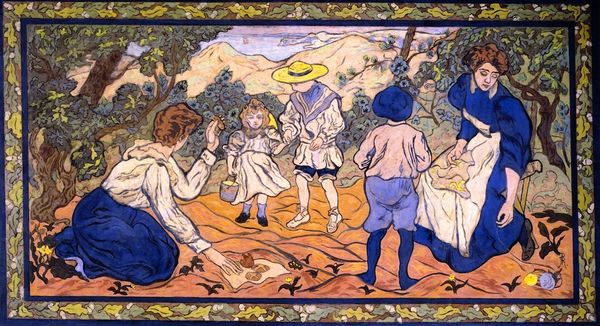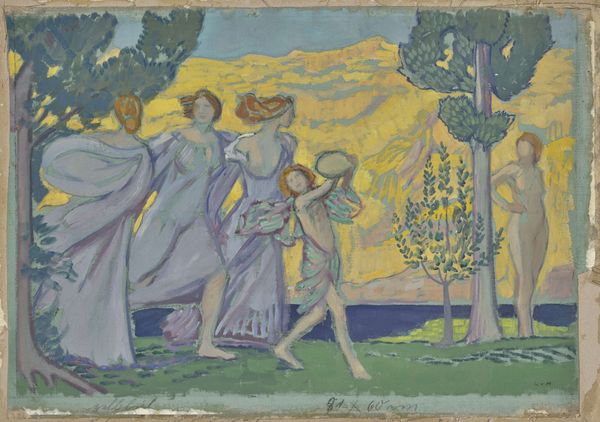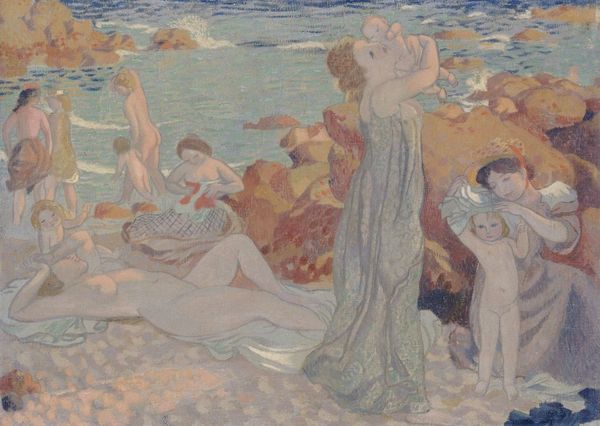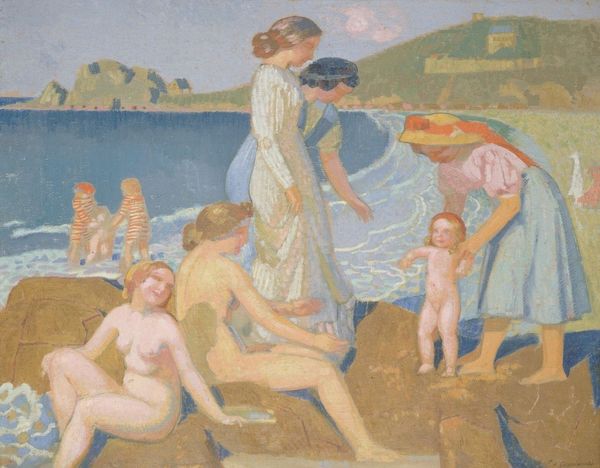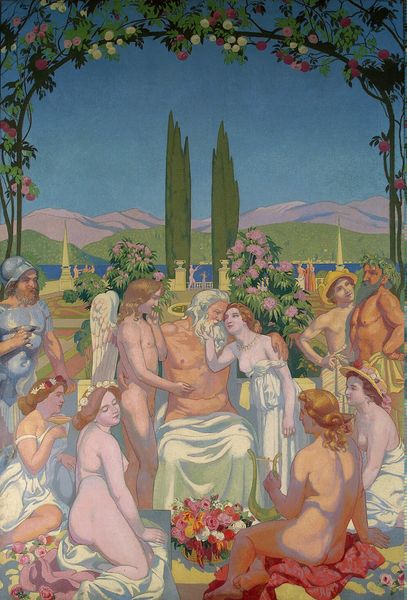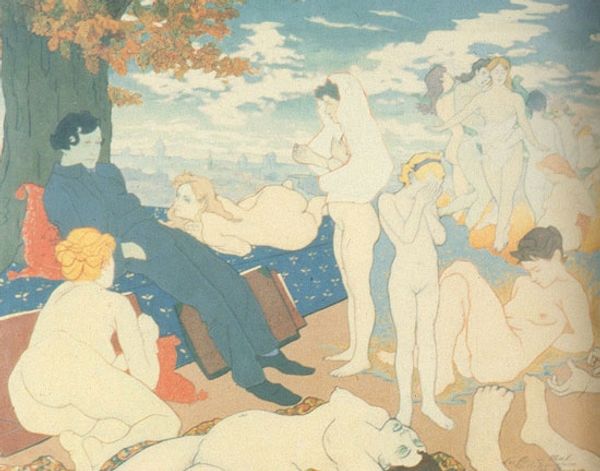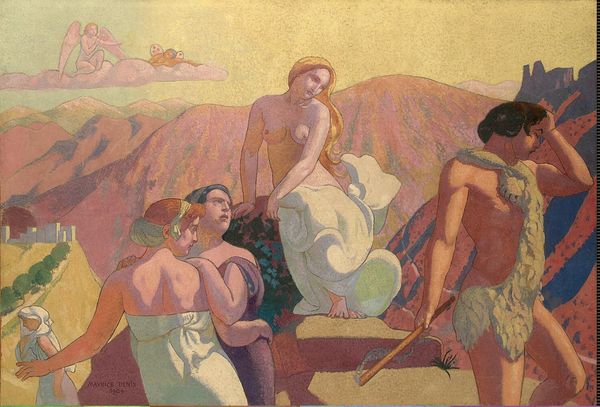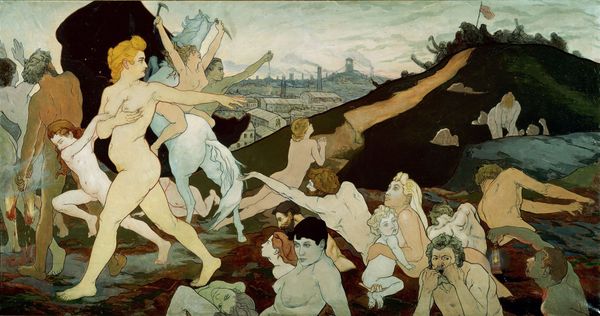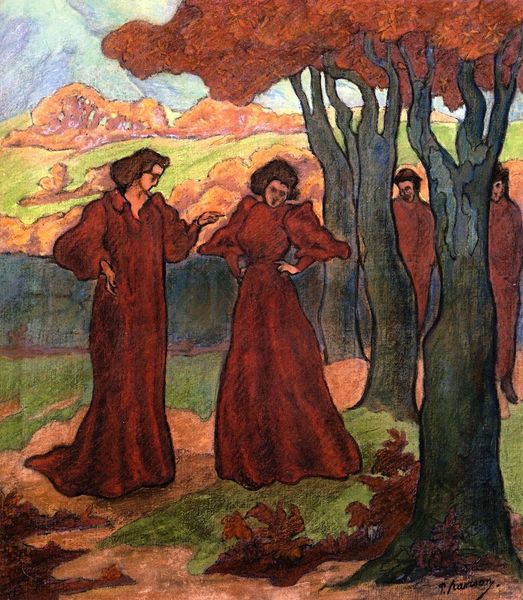
Au temps d'harmonie (L’âge d’or n’est pas dans le passé, il est dans l’avenir) 1895
0:00
0:00
Dimensions: 310 x 410 cm
Copyright: Public domain
Paul Signac created 'In the Time of Harmony' with oil on canvas, using a technique called pointillism, where small, distinct dots of color are applied in patterns to form an image. The pointillist style demanded an immense amount of work, building up the picture dot by dot. This method itself is significant. Signac, along with other neo-impressionists, was interested in the science of color theory, but also in socialist politics. The methodical, almost mechanical application of paint could be seen as a commentary on industrial labor, broken down into its smallest, most repetitive actions. The sheer scale of the painting also speaks to the ambition of these artists, who saw their work as nothing less than a vision for a better society. By emphasizing the labor-intensive process, Signac elevates the status of work, suggesting that even leisure is a form of production. This perspective challenges the traditional hierarchy between fine art and craft, inviting us to consider the social and political implications embedded in the artwork's very making.
Comments
No comments
Be the first to comment and join the conversation on the ultimate creative platform.

